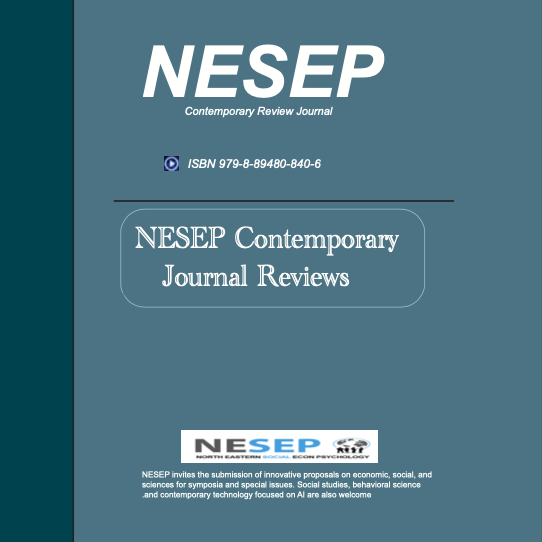Accepted Articles
We congratulate you on acceptance of your manuscript.

Annual Expo by the Journal of Young Explorers Meta and NESEP
- Fundamental or applied research
- Interdisciplinary research
- Judging on a rolling basis
- A work-in-progress research
- Completed research
- Unlimited topics and ideas
- ISBN 979-8-89480-840-6
- NESEP/NY-CSEF event at Harvard Club in NYC
Efficacy of Mask Use in Reducing Sars-Cov2 Infection Rates
Abstract:
SARS-CoV-2, a novel coronavirus also known as COVID-19, has caused a global pandemic, claiming the lives of over 3 million people, and counting. Governments and local polities have implemented public health mandates to reduce the spread, including mask-wearing, a policy that remains controversial. The aim of this study was to examine how effective strict enforcement of mask-wearing policies is in reducing COVID-19 infection rates. A total of 30 countries and subnational political jurisdictions were selected using Text Finder’s random choice generator, then sorted into three categories of mask enforcement: strict, moderate, and lax, characterized by punishments, non-enforcement, or lack of precautions. The percent changes in cases were recorded over a 3-month period prior to and after the declaration of mask mandates for each locality, then analyzed using the Kruskal-Wallis test to rank the three categories. The mean rankings from greatest to least were: lax (24.90), moderate (12.90), and strict (8.70). The Kruskal-Wallis test result was H(2)= 18.240, P=.000. Locations with stricter mask policies had lower infection rates. Therefore, it was concluded that strictly enforced mask policies were most effective in limiting COVID-19 transmission. Confounding variables include political agendas, the sway of public opinions, and a transient lack of data on COVID. Future research could analyze the effectiveness of mask enforcement in locations with different COVID-19 variants.
Keywords: SARS-CoV-2, masks, infection rates, mask enforcement, Kruskal-Wallis test
References
-
Front-line 'Special Forces' Share Candid Stories in University of Utah Health Podcast Series. American Hospital Association. (2020, August 27). https://www.aha.org/other-resources/2020-08-27-front-line-special-forces-share-candid-stories-university-utah-health.
-
Gandhi, M., & Rutherford, G. W. (2020, October 29). Facial Masking for Covid-19 - Potential for "Variolation" as We Await a Vaccine: NEJM. New England Journal of Medicine. https://www.nejm.org/doi/full/10.1056/nejmp2026913
-
Bai, N. (2020, September 2). Still Confused About Masks? Here's the Science Behind How Face Masks Prevent Coronavirus. Still Confused About Masks? Here's the Science Behind How Face Masks Prevent Coronavirus | UC San Francisco. https://www.ucsf.edu/news/2020/06/417906/still-confused-about-masks-heres-science-behind-how-face-masks-prevent.
-
Lyu, W., & Wehby, G. L. (2020, June 16). Community Use Of Face Masks And COVID-19: Evidence From A Natural Experiment Of State Mandates In The US. Health Affairs. https://www.healthaffairs.org/doi/10.1377/hlthaff.2020.00818.
-
Leffler, C. T., Ing, E., Lykins, J. D., Hogan, M. C., McKeown, C. A., & Grzybowski, A. (2020, June 15). Association of country-wide coronavirus mortality with demographics, testing, lockdowns, and public wearing of masks.ResearchGate. https://www.researchgate.net/publication/342198360_Association_of_country-wide_coronavirus_mortality_with_demographics_testing_lockdowns_and_public_wearing_of_masks_Update_June_15_2020.
-
Brooks, J. T., & Butler, J. C. (2021, February 10). Effectiveness of Mask Wearing to Control Community Spread of SARS-CoV-2. JAMA. https://jamanetwork.com/journals/jama/fullarticle/2776536.
-
Vaida, B. (2020, September 4). Pandemic Preparedness. CQ Researcher by CQ Press. http://library.cqpress.com/cqresearcher/document.php?id=cqresrre2020090400.
-
Arora, V. M., Jain, S., Ranney, M. L., & Burstin, H. (2020, August 5). The Case For A National Universal Masking Mandate. Health Affairs. https://www.healthaffairs.org/do/10.1377/hblog20200804.515241/full/.
-
DeSimone, D. C. (2021, March 23). COVID-19 variants: What's the concern? Mayo Clinic. https://www.mayoclinic.org/diseases-conditions/coronavirus/expert-answers/covid-variant/faq-20505779.
-
Howard, J., Huang, A., Li, Z., Tufekci, Z., Zdimal, V., Westhuizen, H.-M. van der, Delft, A. von, Price, A., Fridman, L., Tang, L.-H., Tang, V., Watson, G. L., Bax, C. E., Shaikh, R., Questier, F., Hernandez, D., Chu, L. F., Ramirez, C. M., & Rimoin, A. W. (2021, January 26). An evidence review of face masks against COVID-19. PNAS. https://www.pnas.org/content/118/4/e2014564118.
-
Centers for Disease Control and Prevention. (2021, June 15). SARS-CoV-2 Variant Classifications and Definitions. Centers for Disease Control and Prevention. https://www.cdc.gov/coronavirus/2019-ncov/variants/variant-info.html.